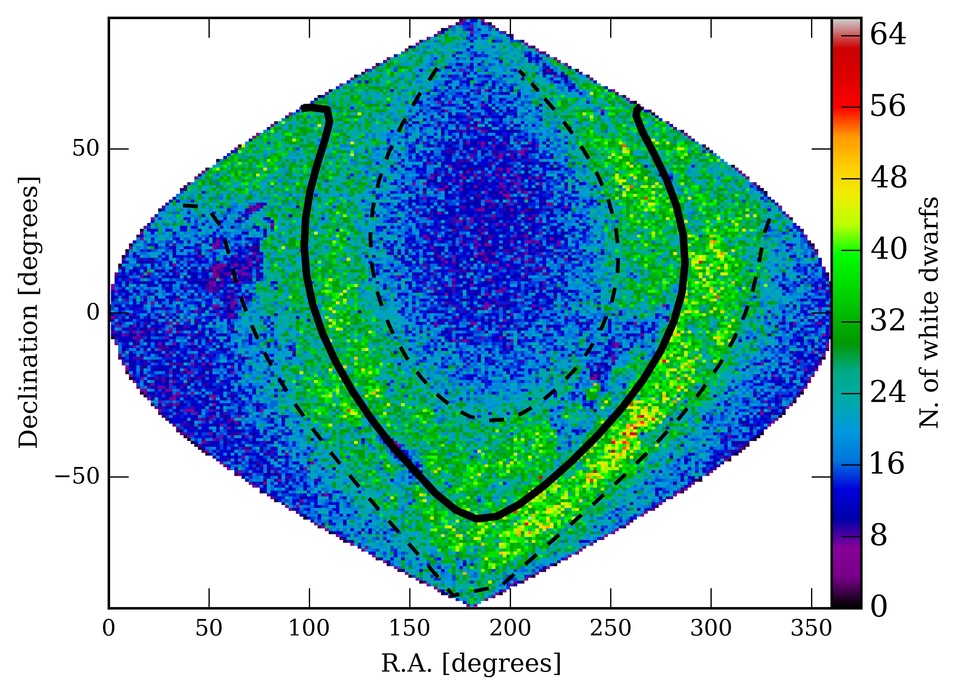WEAVE-WD
Team Lead: Boris Gaensicke
The local white dwarf population preserves detailed information on the Galactic star formation history. Nearly 95% of all stars will end their lives as white dwarfs, and most stars with masses larger than ~1.2M⊙ ever formed are now stellar remnants. The WEAVE-WD survey will obtain spectroscopy for ~100.000 white dwarfs, which will be used to both derive the local star formation history and to establish the spectrophotomteric flux calibration of WEAVE.
The local star formation history
White dwarf cooling is well understood in terms of the underlying physics, and has been used to estimate the age of the Galactic disk, individual open clusters, and the halo. Broader application of this method has been prevented so far by the small and incomplete samples of known white dwarfs. Because of their small radii, white dwarfs are intrinsically faint, requiring moderately large telescope apertures for their study. Consequently the currently available luminosity functions contain at best a few thousand stars, based on white dwarfs identified by SDSS. However, incompleteness and selection biases severely limit the constraints that can be drawn from these studies.
Combining parallax, apparent magnitude, proper motion and BP/RP colour, Gaia will overcome all the traditional limitations in the discovery of white dwarfs. The ≃ 500.000 white dwarfs that Gaia will identify will be 100% complete within ≃ 50 pc, and ≃ 50% out to 300 pc. The sample of Gaia white dwarfs will be sufficiently large to reconstruct the stellar formation history, the initial-to-final mass relation, and the initial mass function for the thin/thick disk and halo separately and assess the ages of these three components individually. Achieving these goals requires ground-based optical spectroscopic follow-up of the Gaia white dwarf population, as their temperatures and surface gravities are measured from the Stark-broadened Balmer lines. WEAVE is ideally suited to provide the optical spectroscopy, combining blue coverage across the higher Balmer lines, exquisite throughput, and covering both high galactic latitudes as well as the Galactic plane.
Figure 1: Gaia will unambiguously identify ~500.000 white dwarfs based on their parallaxes and G/BP/RP magnitudes. Because of their intrinsic low luminosities, the distribution of the white dwarfs only shows a modest variation with galactic latitude.
Flux calibration
White dwarfs are routinely used as spectrophotometric flux standards (HST: Bohlin et al. 2001, Bohlin et al. 2014; X-Shooter: Moehler et al. 2014), as their spectra are extremely simple (=pure hydrogen atmospheres in most cases), and can easily be modelled to high precision (~1-2% across all wavelengths) with only two free parameters, effective temperature and surface gravity. Moreover, in a magnitude-limited sample, the majority of white dwarfs has effective temperatures >~8000K, i.e. they are blue objects with significant amounts of flux at the shortest wavelengths. The surface density and magnitude distribution of the Gaia white dwarf population is well-matched to the field of view of WEAVE and the aperture of the WHT, and ~10-15 white dwarfs will be observed per WEAVE field for this purpose.
